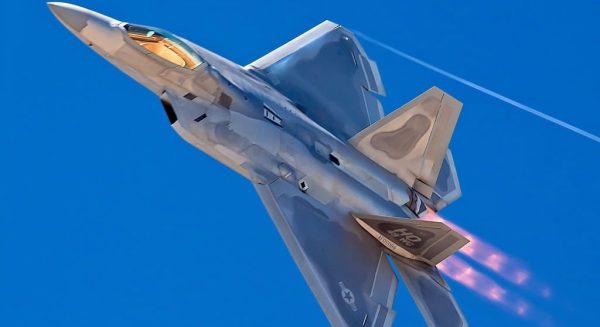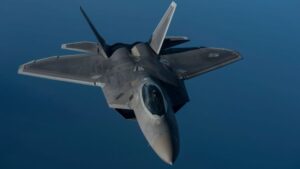The following piece first appeared on Warrior Maven, a Military Content Group website.
The Air Force hasn’t publicly dropped its plan to award a contract for the Next Generation Air Dominance (NGAD) fighter in 2024. But as the year grows shorter, that goal looks less achievable – and that could mean the F-22 Raptor would stay in service longer.
In July, Air Force Secretary Frank Kendall called time-out on the development of a new stealth fighter.
“We’re taking a pause here,” Kendall said. “With the platform itself, we’re taking a pause. With the rest of the elements of the air dominance family of systems, we’re moving forward as fast as we can.”
A couple of years ago, the Air Force pointed to 2030 as the year the NGAD would begin replacing the F-22. The sixth-generation fighter has been in development for about a decade.
The F-22 took its first flight in 1997 and entered service in 2005. The Raptor had no equal in the skies for many years. Then Russia responded by building its own fifth-gen fighter, the Su-57, and China has fielded the Chengdu J-20.
In 2023, the Air Force asked to retire 32 of its early model F-22s (only 183 of the planes are operational). But in June, the Government Accountability Office publicly questioned the plan, saying Congress would need more information before it could grant its okay.
The following piece first appeared on Warrior Maven, a Military Content Group website.
The Air Force hasn’t publicly dropped its plan to award a contract for the Next Generation Air Dominance (NGAD) fighter in 2024. But as the year grows shorter, that goal looks less achievable – and that could mean the F-22 Raptor would stay in service longer.
In July, Air Force Secretary Frank Kendall called time-out on the development of a new stealth fighter.
“We’re taking a pause here,” Kendall said. “With the platform itself, we’re taking a pause. With the rest of the elements of the air dominance family of systems, we’re moving forward as fast as we can.”
A couple of years ago, the Air Force pointed to 2030 as the year the NGAD would begin replacing the F-22. The sixth-generation fighter has been in development for about a decade.
The F-22 took its first flight in 1997 and entered service in 2005. The Raptor had no equal in the skies for many years. Then Russia responded by building its own fifth-gen fighter, the Su-57, and China has fielded the Chengdu J-20.
In 2023, the Air Force asked to retire 32 of its early model F-22s (only 183 of the planes are operational). But in June, the Government Accountability Office publicly questioned the plan, saying Congress would need more information before it could grant its okay.
The Air Force’s argument was that it could save about $1.8 billion (which could be used for programs like the NGAD) by divesting the older planes, which are mostly used to train new pilots. The GAO asked the Air Force for information on what the move would mean for pilot training, and whether the older planes could be upgraded.
The agency also noted that the F-22 did not meet its mission capability or aircraft availability goals from 2011 to 2021.
So retiring planes that are used by rookie pilots could mean other, newer models would be used for training – and that could more stresses on the F-22 fleet. Upgrading the planes could give the Air Force more front-line fighters. Still, Lockheed Martin says that could take up to 15 years and cost at least $100 million per plane.
It’s estimated that an upgrade could keep the F-22 in service for at least ten years.
Kendall, the Air Force secretary, has said the service will take “a few months right now to figure out whether we’ve got the right design (for the NGAD) and make sure we’re on the right course.”
Reuters has reported that budget pressures, among other issues, could lead the NGAD’s five-year, $28.5 billion development fund could be spread out over another couple of years. That could mean the F-22 will be flying longer than originally planned.



